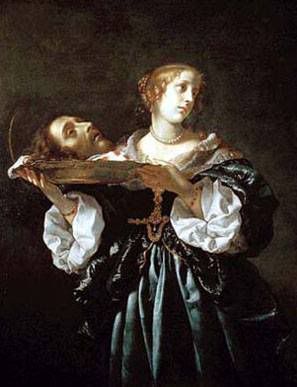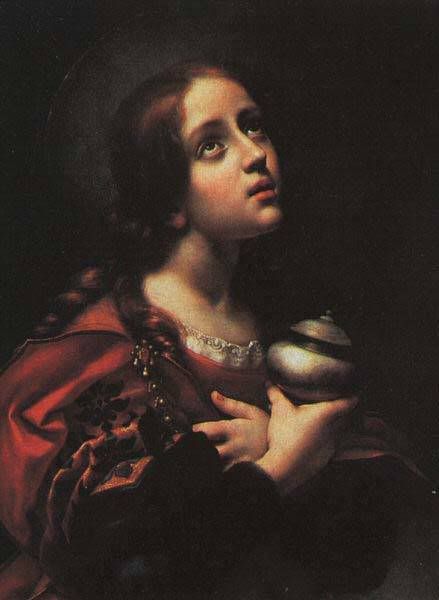Carlo Dolci


Carlo Dolci
Información de la Wikipedia.
Carlo (or Carlino) Dolci (25 May 1616 - 17 January 1686) was an Italian Baroque painter. He was born and died in Florence, the grandson of a painter on his mother's side. While he was precocious and apprenticed at a young age with Jacopo Vignali, Dolci was not prolific. It is said that in 1682, when he saw Luca Giordano, known as the fa presto painter, paint more in five hours than he could have completed in months, he fell into depression."He would take weeks over a single foot", according to biographer Filippo Baldinucci. This dilatory technique made him unsuited for large-scale fresco painting. He used pencil chiefly for sacred subjects, and generally painted in a small size, although he made a few life-size pictures. His daughter, Agnese Dolci, who showed excellence in copying the works of her father.
Dolci works are easily distinguishable by the delicacy of the composition. Pilkington declared: "His pencil was tender, his touch inexpressibly neat, and his colouring transparent; though he has often been censured for the excessive labour bestowed on his pictures, and for giving his carnations more of the appearance of ivory than the look of flesh" (citation needed), a flaw that had been already apparent in Agnolo Bronzino.
The grand manner, vigorous coloration or luminosity, and dynamic emotion of the Bolognese-Roman Baroque are foreign to Dolci and Florence. Perhaps the last in a the long tradition of prestigious Florentine painting, Dolci appears constitutionally blind to the new aesthetic, constrained by the Florentine tradition, that holds each drawn figure under a microscope of academicism. Wittkower describes him as the Florentine counterpart, in terms of devotional imaging, of the Roman Sassoferrato.
Dolci was notoriously pious; it is said that during Passion week every year, he painted a half-figure of the Saviour. His masterpieces are about sacred themes, where the protagonist is often highly emotive, nearly mawkish. There is a want of character in his pictures, and his grouping lacks harmony, but the general tone accords with the idea of the passion portrayed.
Among the best works of this master are the St Sebastian; the Four Evangelists at Florence; Christ Breaking the Bread in Burleigh; the St Cecilia in Dresden; an Adoration of the Magi; and a masterpiece is his St Andrew praying before his Crucifixion in the Pitti gallery, painted in 1646. He completed his portrait of Fra Ainolfo de' Bardi, when he was 16 years old.
One of his works, Madonna of the Veil, was stolen in 1976 and has never been recovered.
Labels: Pintores
1 Comments:
I have a small painting in a wooden circular frame with an inscription on the reverse. Much has worn away, but what I can still see reads: Tuscan ... Evang ... Luke ... Agnese Dolci 16?4.
I wonder if you might be able to tell me anything about it.
Post a Comment
<< Home